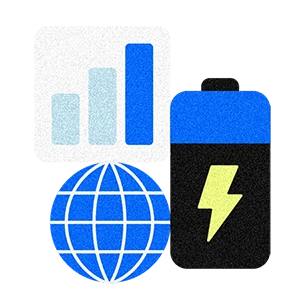Table of contents
Your point-of-sale system is the backbone of your business, so deciding whether, when, and how to switch your POS system can be daunting, especially since new technology requires both financial and training investment.
If you are considering a switch because your business has outgrown your current POS system it may be time to evaluate other options — particularly if you’re using a cumbersome legacy system. Here’s what you need to know about switching POS systems, from when it makes sense to switch to how to choose a system that works for your business.
Common reasons to switch your POS system
Whether you operate a retail boutique or a multi-location restaurant, your POS system is a critical tool for profitability, so there are many reasons you might consider a system change. Here are some of the most common reasons restaurants change POS systems:
Your POS system causes problems
A POS system that slows down sales, lacks flexibility, or deters and frustrates customers can break your business in the highly competitive, low-margin environment of food service. Common problems that business operators encounter, especially with legacy POS systems which many restaurants still rely on, include:
- Lack of reliability, flexibility, or scalability
- Complex system technology that’s challenging for staff to learn and use
- Lack of well-integrated, easy-to-use cash flow, marketing, and operational tools, including sales reports, tracking inventory, loyalty programs, and managing orders.
Square has made meaningful improvements to bring sellers a faster, more reliable platform, so you can focus on running your business with peace of mind. But for the times when disruptions do happen, we’ve recently enabled your POS to automatically and more seamlessly switch to offline mode (and back online as soon as possible). Plus, we’ve added notifications and are making faster updates on our live Square Status page to keep you updated on the latest.
Your POS system doesn’t connect all your sales channels
As businesses evolve to meet shifting customer expectations, your POS system needs to support your ability to sell across multiple channels, whether that’s in person, online, on social media, or over the phone. If your POS system can’t connect every tool and platform that you use to sell and keep track of your sales and orders, or if it fails to provide you a holistic look at sales across each channel you use, it’s likely time for an upgrade.
Square offers versatile POS solutions so your restaurant business can pursue different revenue streams, such as catering or a retail shop, as well as other food service concepts, such as a food truck, kiosk registers, or tableside checkout, with a lot more flexibility than legacy software.
Your POS doesn’t offer team management or marketing tools
The right POS system should allow you to manage your entire business and all necessary data in one system. Switching to a POS that enables you to manage your staff, to set staff permissions, to create schedules, and to pay your employees streamlines your workflow and frees up time, especially as you grow your team.
As you make sales, it’s important to track and leverage that data for marketing. A POS that offers built-in customer data and marketing tools, such as a customer directory, loyalty programs, gift cards, and marketing messages, helps you understand customer preferences and ordering habits to keep those customers coming back to your restaurant.
You track inventory manually
Tracking your inventory manually isn’t sustainable for business growth. Manual inventory management is error-prone and time-consuming. If you sell across multiple platforms, offer in-restaurant pickup or delivery options, or have plans to scale, a POS with an automatic inventory-tracking system is essential.
Your POS system doesn’t accept certain payments
Customers expect options when it comes to paying, whether they’re in a restaurant or ordering online. Besides cash and card, your POS system should allow a variety of ways for customers to pay, including digital wallet payments, such as Apple Pay or Google Pay, and contactless payment options, such as Tap to Pay on iPhone.
Your POS system no longer works for your business
Even if you’ve relied on the same POS system for years, it may no longer be the right fit for your business’ evolving needs. Maybe your restaurant has expanded to multiple locations or you need better tools than what your current POS offers. Some legacy POS systems fail to deliver the flexibility of managing multi-location restaurants, or the interfaces are too complex to train new employees quickly. Other systems discontinue their POS solutions after years of service. If that’s the case for your POS, it’s time to make a switch.
What to consider when you switch your POS system
Once you’ve decided it’s time to switch your POS system, there are several factors to consider as you explore new options:
Cost
The cost of POS systems can vary dramatically, depending on software, contracts, payment processing fees, and additional hardware. Many legacy POS systems are less transparent about pricing, require long-term contracts, and often hit users with hidden fees. Look for a POS solution that doesn’t lock you into a contract, that offers a transparent total cost of ownership, and that provides all the tools you need at a low monthly subscription cost and per-transaction cost. Square offers a cloud-based POS system where you can bring your own equipment, pay a monthly subscription fee with no long-term commitments, and enjoy lower transaction fees.
Features
It’s smart to invest in a POS system that will grow with your business. Ensure the POS system you select offers omnichannel capabilities so you can sell and manage inventory across multiple channels and reach customers. It’s also important that your POS tools align with your business needs. Whether you want to grow your team, build stronger customer relationships, or focus on online growth, make sure the POS you choose offers the tools you need to grow your business today for for years to come. Square offers easy integration when you want to launch new revenue streams, such as catering, retail, or tableside payments.
Ease of use
A POS system that is user-friendly, intuitive, and easy to navigate will lessen the learning curve for you and your staff. This is important if you have multiple staff members who use the POS in fast-paced environments, such as a quick service restaurant. The easier the system is to use, the less room there is for error. Square is designed with usability in mind and provides an intuitive UI/UX that enables new employees to onboard quickly.
Integrations
Consider the tools you use already, such as invoicing, expense tracking, or accounting, as well as features you may need to add as you grow. Make sure the POS you select can easily integrate with apps you use and that there’s room to add hardware you might need in the future, such as a portable POS or a register. Square has hundreds of industry partners to grant you advanced functionality where needed, even for highly sophisticated restaurant operations.
Onboarding
Confirm that you can export data out of your old system, such as inventory or customer lists, and import them into your new system. Working with a sales rep or a migration specialist during the onboarding process can help you understand how the features of your new POS system can add value to your operations. A specialist can also help you transition to your new system, walk you through the tools, and train your staff.
For a deep dive on the right POS solution for your restaurant, read more about how to choose the best POS system for your business.
How to switch your POS system
After you select a new POS system for your business and are ready to make the switch, keep these steps in mind for a smooth transition:
Organize your data
Once you select a new POS, you’ll need to migrate your sales data, customer data, and inventory from your old POS system to your new one. This is a good time to clean up or organize your data, or at least to clarify what’s essential to move to the new system and what can be left behind. It’s also a good time to review your backup process to mitigate any loss during the transition.
Map out a process
It’s helpful to think through the switching process and how much time you anticipate it will take to switch to a new POS system. Your account manager or onboarding specialist for your new POS system should be able to assist you during the transition, providing helpful information on what data should be moved over to your new system first. For example, you may want to clean up your item list and import it into your new system, but you may want to wait to move your exact item quantities until you’re live in your new system.
Depending on the size of your business, you may need some documentation or project management tools to ensure all the right data is moved from your old system to the new one in accordance with your timelines. You can also work backward from the date your contract ends with your old POS provider to schedule the transition and training needed.
Learn your new POS system
Once you’ve moved your data to your new POS system, it’s time to learn your new system and to get your staff comfortable with it. If you’ve selected an intuitive and user-friendly POS, the learning curve will be minimal, but you still want to ensure your team is confident with the tools. Consider scheduling a training and a run-through before your set launch date to familiarize your staff with the new system.
If you can, it’s smart to keep your old POS active for a short period of time after you transition to the new system so you have full access to all of your past data.
Learn more about how to set up a POS with Square:
![]()












